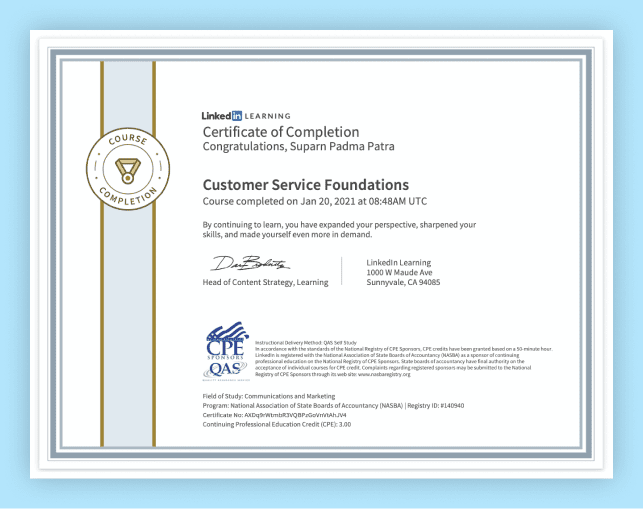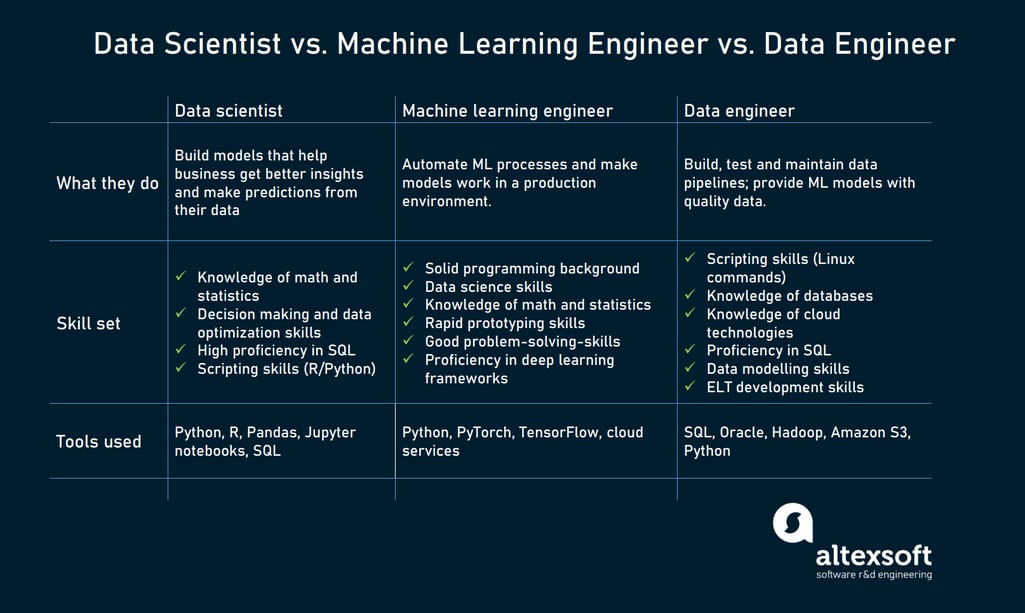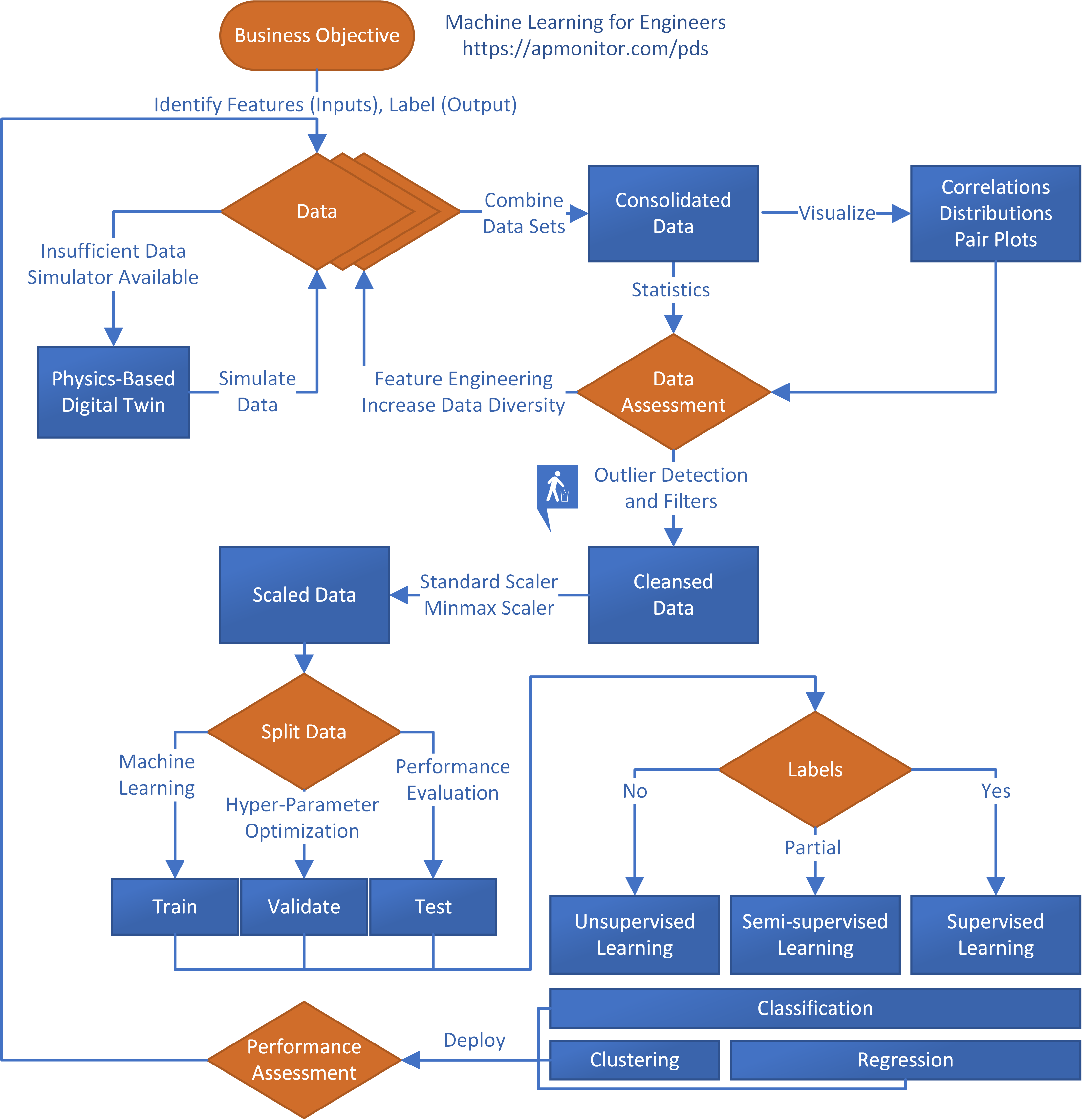All Categories
Featured
Table of Contents
- – Not known Facts About Machine Learning Bootcam...
- – The Only Guide for Machine Learning Crash Course
- – Unknown Facts About Machine Learning Engineer...
- – Everything about From Software Engineering To...
- – Machine Learning (Ml) & Artificial Intellige...
- – Examine This Report about Machine Learning I...
You possibly understand Santiago from his Twitter. On Twitter, every day, he shares a lot of functional points regarding machine discovering. Alexey: Prior to we go into our primary subject of relocating from software application engineering to device knowing, possibly we can start with your background.
I went to university, obtained a computer system science degree, and I began building software. Back then, I had no concept regarding machine discovering.
I recognize you've been making use of the term "transitioning from software program design to maker understanding". I like the term "including to my ability the artificial intelligence abilities" extra since I assume if you're a software program designer, you are already giving a whole lot of value. By including artificial intelligence now, you're boosting the effect that you can have on the market.
Alexey: This comes back to one of your tweets or maybe it was from your course when you compare 2 approaches to discovering. In this case, it was some issue from Kaggle regarding this Titanic dataset, and you just learn exactly how to fix this issue utilizing a particular device, like choice trees from SciKit Learn.
Not known Facts About Machine Learning Bootcamp: Build An Ml Portfolio
You initially learn math, or direct algebra, calculus. After that when you recognize the mathematics, you go to device learning theory and you learn the concept. 4 years later on, you finally come to applications, "Okay, exactly how do I use all these 4 years of math to address this Titanic trouble?" ? In the previous, you kind of conserve yourself some time, I think.
If I have an electrical outlet right here that I require changing, I do not wish to most likely to college, spend four years comprehending the mathematics behind electrical energy and the physics and all of that, just to change an outlet. I would instead begin with the electrical outlet and locate a YouTube video clip that helps me experience the issue.
Santiago: I truly like the concept of starting with a trouble, attempting to throw out what I recognize up to that trouble and understand why it doesn't work. Get the devices that I require to solve that trouble and begin digging much deeper and deeper and deeper from that factor on.
That's what I typically suggest. Alexey: Maybe we can speak a little bit regarding discovering sources. You discussed in Kaggle there is an intro tutorial, where you can get and discover just how to choose trees. At the start, prior to we started this interview, you pointed out a couple of publications as well.
The only requirement for that course is that you know a little bit of Python. If you go to my account, the tweet that's going to be on the top, the one that claims "pinned tweet".
The Only Guide for Machine Learning Crash Course

Also if you're not a programmer, you can begin with Python and function your means to even more artificial intelligence. This roadmap is concentrated on Coursera, which is a system that I really, really like. You can investigate all of the courses free of charge or you can pay for the Coursera membership to get certifications if you wish to.
So that's what I would certainly do. Alexey: This comes back to one of your tweets or perhaps it was from your program when you compare 2 methods to discovering. One approach is the trouble based technique, which you just chatted around. You discover an issue. In this case, it was some problem from Kaggle concerning this Titanic dataset, and you just discover exactly how to resolve this trouble utilizing a specific device, like choice trees from SciKit Learn.

You first discover math, or straight algebra, calculus. When you understand the mathematics, you go to maker understanding concept and you discover the concept.
If I have an electric outlet here that I require replacing, I don't intend to go to college, invest four years comprehending the mathematics behind electrical energy and the physics and all of that, just to alter an outlet. I would certainly instead begin with the outlet and locate a YouTube video clip that helps me go with the issue.
Santiago: I really like the idea of starting with an issue, trying to toss out what I understand up to that trouble and understand why it doesn't work. Get the tools that I need to fix that trouble and begin digging much deeper and deeper and much deeper from that factor on.
To make sure that's what I typically suggest. Alexey: Possibly we can talk a bit concerning finding out sources. You mentioned in Kaggle there is an intro tutorial, where you can get and learn exactly how to make decision trees. At the start, prior to we started this meeting, you pointed out a pair of publications.
Unknown Facts About Machine Learning Engineer: A Highly Demanded Career ...
The only need for that course is that you understand a little bit of Python. If you go to my profile, the tweet that's going to be on the top, the one that claims "pinned tweet".
Even if you're not a designer, you can begin with Python and work your method to even more maker knowing. This roadmap is concentrated on Coursera, which is a system that I actually, truly like. You can investigate all of the training courses completely free or you can spend for the Coursera subscription to obtain certificates if you intend to.
Everything about From Software Engineering To Machine Learning
Alexey: This comes back to one of your tweets or perhaps it was from your program when you contrast 2 strategies to discovering. In this situation, it was some problem from Kaggle regarding this Titanic dataset, and you just discover exactly how to fix this problem utilizing a specific device, like choice trees from SciKit Learn.

You initially discover math, or straight algebra, calculus. When you know the mathematics, you go to equipment knowing concept and you find out the concept. 4 years later, you lastly come to applications, "Okay, exactly how do I use all these four years of mathematics to address this Titanic problem?" Right? So in the former, you kind of save on your own time, I believe.
If I have an electric outlet below that I need replacing, I do not intend to go to college, spend 4 years understanding the mathematics behind power and the physics and all of that, simply to transform an outlet. I would certainly rather begin with the electrical outlet and locate a YouTube video clip that assists me go via the problem.
Negative example. You get the idea? (27:22) Santiago: I really like the idea of starting with a trouble, trying to throw out what I know approximately that issue and comprehend why it does not function. Grab the tools that I need to address that problem and begin excavating much deeper and much deeper and deeper from that factor on.
Alexey: Possibly we can talk a little bit concerning finding out resources. You pointed out in Kaggle there is an introduction tutorial, where you can get and discover exactly how to make choice trees.
Machine Learning (Ml) & Artificial Intelligence (Ai) Can Be Fun For Everyone
The only requirement for that program is that you know a little bit of Python. If you go to my account, the tweet that's going to be on the top, the one that claims "pinned tweet".
Even if you're not a developer, you can start with Python and work your way to even more artificial intelligence. This roadmap is concentrated on Coursera, which is a platform that I actually, actually like. You can audit all of the training courses for complimentary or you can pay for the Coursera subscription to obtain certifications if you intend to.
So that's what I would certainly do. Alexey: This comes back to among your tweets or possibly it was from your program when you compare 2 approaches to knowing. One strategy is the trouble based approach, which you just spoke about. You find a trouble. In this instance, it was some trouble from Kaggle about this Titanic dataset, and you simply find out how to resolve this problem making use of a certain tool, like decision trees from SciKit Learn.
You first find out mathematics, or straight algebra, calculus. When you know the math, you go to machine understanding theory and you find out the theory.
Examine This Report about Machine Learning Is Still Too Hard For Software Engineers
If I have an electric outlet right here that I require changing, I do not intend to go to university, invest four years comprehending the mathematics behind electrical power and the physics and all of that, simply to alter an outlet. I prefer to begin with the electrical outlet and locate a YouTube video clip that aids me go with the trouble.
Santiago: I really like the concept of beginning with a trouble, attempting to throw out what I understand up to that issue and comprehend why it doesn't work. Order the tools that I require to resolve that trouble and start digging deeper and much deeper and much deeper from that factor on.

Alexey: Possibly we can speak a little bit regarding learning resources. You mentioned in Kaggle there is an intro tutorial, where you can get and find out how to make choice trees.
The only demand for that course is that you know a little of Python. If you're a developer, that's an excellent beginning point. (38:48) Santiago: If you're not a designer, after that I do have a pin on my Twitter account. If you go to my account, the tweet that's going to get on the top, the one that states "pinned tweet".
Also if you're not a developer, you can begin with Python and function your way to even more device learning. This roadmap is focused on Coursera, which is a platform that I truly, actually like. You can investigate all of the courses for totally free or you can pay for the Coursera subscription to get certificates if you wish to.
Table of Contents
- – Not known Facts About Machine Learning Bootcam...
- – The Only Guide for Machine Learning Crash Course
- – Unknown Facts About Machine Learning Engineer...
- – Everything about From Software Engineering To...
- – Machine Learning (Ml) & Artificial Intellige...
- – Examine This Report about Machine Learning I...
Latest Posts
The 10 Most Common Front-end Development Interview Questions
Amazon Software Developer Interview – Most Common Questions
Preparing For Your Full Loop Interview At Meta – What To Expect
More
Latest Posts
The 10 Most Common Front-end Development Interview Questions
Amazon Software Developer Interview – Most Common Questions
Preparing For Your Full Loop Interview At Meta – What To Expect